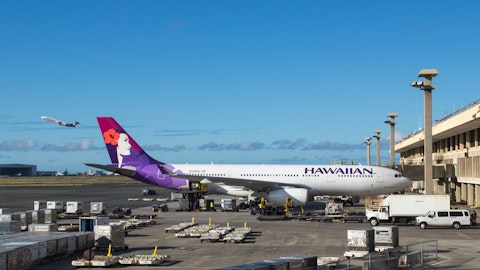McDonald’s Corporation (NYSE:MCD) has been a great investment for a very long time…
$1 invested in McDonald’s stock would be worth $606.67 by the end of 2015 (including dividends). That’s an annualized return of 14.9% a year.
Wouldn’t it be great to generate solid returns without having to identify the ‘next’ McDonald’s?
Unfortunately, the days of McDonald’s generating double-digit returns are over.
Or maybe not…
On April 7th, 2014 McDonald’s stock closed at $97.01. The previous Sunday (April 6th, 2014) McDonald’s was first recommended in the Sure Dividend newsletter.
The company’s stock price closed at $122.56 on Friday, May 20th, 2016. This comes to an annualized return of 15.6% a year (including dividends).
The S&P 500 generated annualized returns of 7.3% (including dividends) over the same period.
McDonald’s did it again.
This case study examines:
1. Why McDonald’s was recommended in April of 2014
2. The difficulties of holding McDonald’s stock
3. The Stock that reminds me of 2014 McDonald’s most today
4. 3-Step Process to finding great businesses trading at fair or better prices
First, let’s see how hedge funds have been trading McDonald’s as its shares have risen by 25% over the last year. Of the group of hedge funds tracked by Insider Monkey, 83 funds were long McDonald’s on March 31, largely flat from the 84 that were long on December 31. However, there was a very large dip in share ownership, as the value of these investors’ holdings fell to just under $4.00 billion on March 31 from over $6.74 billion on December 31, and that despite shares of the company having a strong first quarter. One of the largest moves out of the stock was made by First Eagle Investment Management, which sold off nearly all of its $340 million position in the stock during the first quarter.
Why McDonald’s Was Recommended in April of 2014
Before reading any more, I want to clarify a few things about this case study.
First, not every investment works out the same using the method outlined in this article. Some work out well in the short run, others don’t. Some have performed better than McDonald’s, some worse.
Please don’t read this and think I have some ‘magic formula’ that picks 100% winners that only go up every year.
It’s not about a magic formula. It’s all about investing in high quality businesses trading at fair or better prices for the long-run. I have a systematic way of approaching this investment model, but it isn’t a magic formula that can’t miss.
Second, my investment in McDonald’s is not over. It could go up or down over the next year; I don’t know (and quite frankly I don’t care).
As an investor with a long time horizon, what matters is that McDonald’s keeps compounding its intrinsic per-share value over the long run. Around 2 years is not a long-term investment.
With that out of the way, back to why McDonald’s was recommended…
The 8 Rules of Dividend Investing identifies and ranks high quality dividend growth stocks trading at fair or better prices. The ‘Buy’ identification and ranking criteria are below:
1. 25+ years of dividend payments without a reduction required
2. The higher the dividend yield, the better
3. The lower the payout ratio, the better
4. The faster the growth rate, the better
5. The lower the stock price standard deviation, the better
I didn’t select these metrics out of a hat… They are all based on research that shows each metric has historically either reduced risk or increased returns.
Rule 1 Analysis: McDonald’s Amazing Dividend History
McDonald’s had 38 consecutive years of dividend increases when it was recommended. The company was (and still is) a Dividend Aristocrat.
Dividend Aristocrats are stocks with 25+ years of consecutive dividend increases. You can see all 50 Dividend Aristocrats here.
The Dividend Aristocrats Index has outperformed the market by about 3 percentage points a year over the last decade, according to S&P.
The 1st rule of The 8 Rules of Dividend Investing is:
“Invest only in stocks with 25 or more years of dividend payments without a reduction.”
This includes all Dividend Aristocrats. The rule is a bit more inclusive than the Dividend Aristocrats rule. Even so, it only allows in businesses with a very long history of paying consistent dividends.
This limits Sure Dividend’s investable universe to only shareholder friendly businesses with long dividend histories. When you are selecting from a pool of (likely) great businesses, it is harder to make mistakes.
McDonald’s Corporation (NYSE:MCD) clearly passed the dividend test. The company has an excellent track record of dividend growth.
Why have Dividend Aristocrats outperformed by so much?
I believe that long dividend histories are proof of something else…
Namely, a strong and durable competitive advantage.
“The key to investing is not assessing how much an industry is going to affect society, or how much it will grow, but rather determining the competitive advantage of any given company and, above all, the durability of that advantage.”
– Warren Buffett
For a business to pay stable or growing dividends for 2 and a half decades, it must have (or at least recently had) a strong and durable competitive advantage.
Follow Mcdonalds Corp (NYSE:MCD)
Follow Mcdonalds Corp (NYSE:MCD)
Receive real-time insider trading and news alerts





